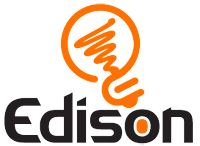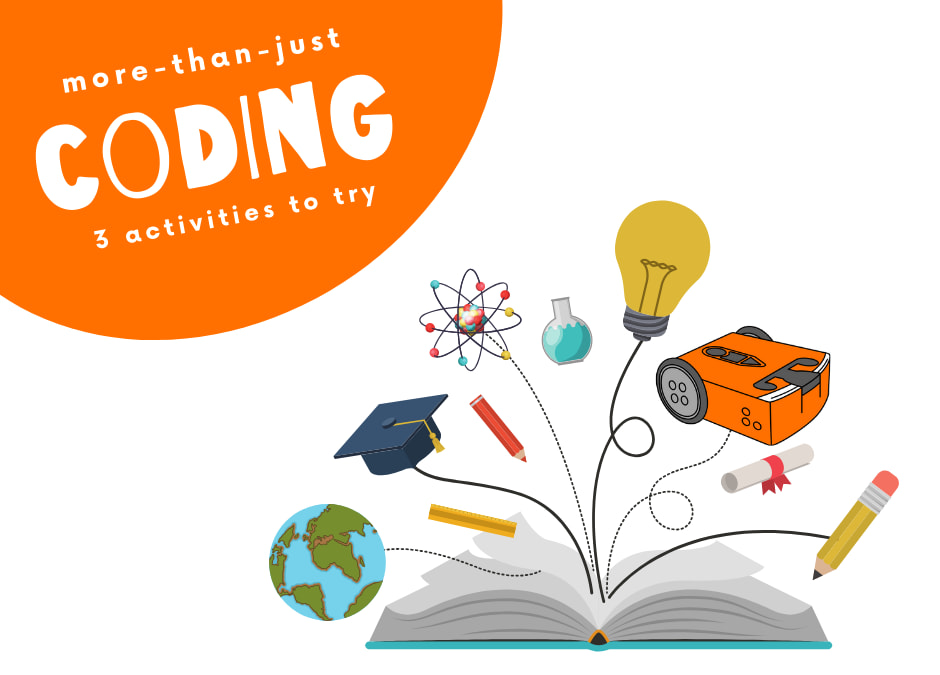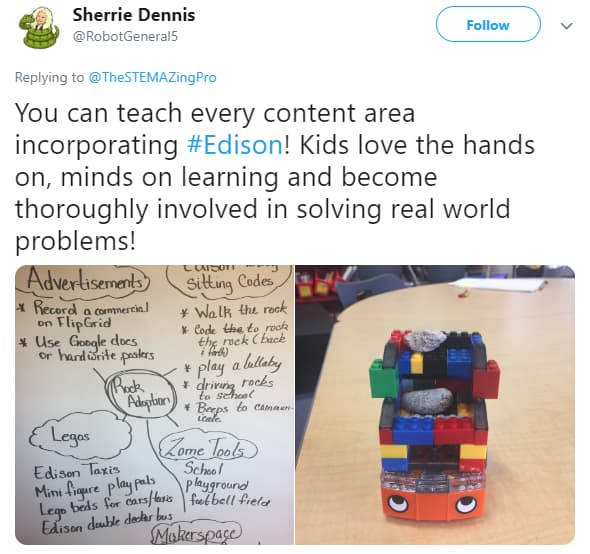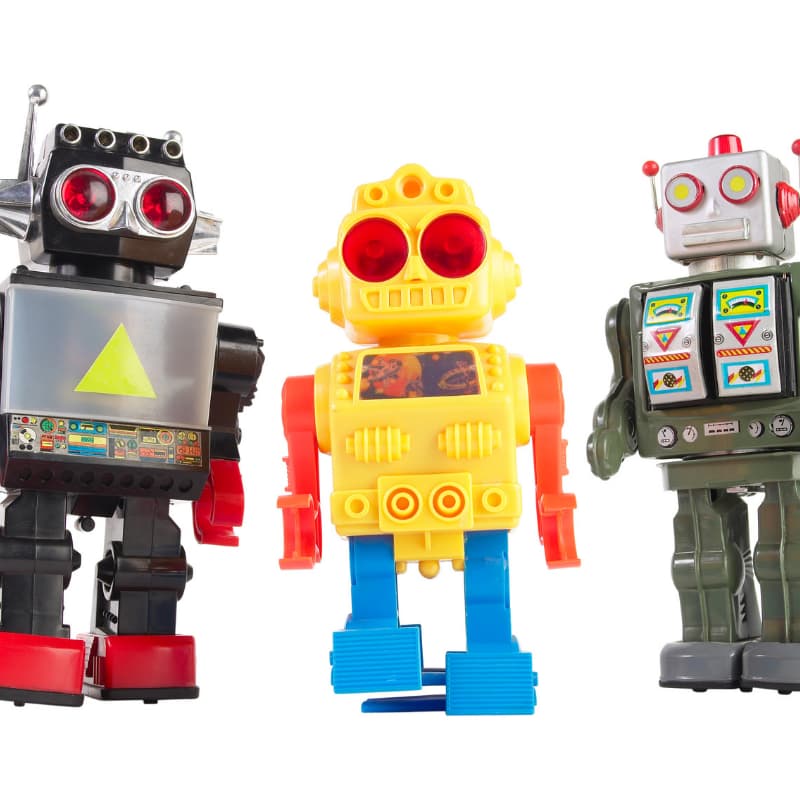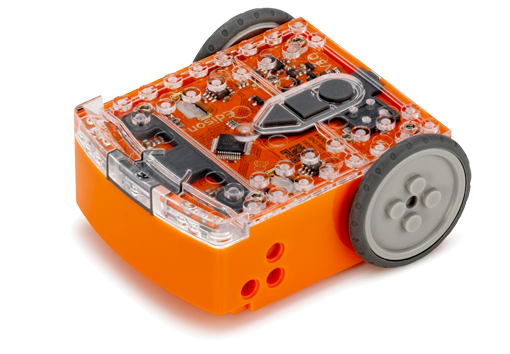Which classrooms do robots belong in?
When I ask teachers this question, there’s inevitably at least one fervent response of ‘not mine! I’m not a technology teacher.’
This disdain towards the idea of using robots always makes me sad. Why this passionate dispassion? It usually stems from a lack of confidence (generally due to a lack of training using tech in their classroom). There’s another piece to the puzzle as well: a belief that all you can teach with a robot is coding.
Robots are for coding … right?
It is true that programmable robots are fantastic motivators for kids learning coding and computational thinking. That’s because robots bring computer science to life.
Unlike on-screen only coding, robots let kids really see their programs working. Programmable robots allow kids to test their code ‘in the real world’ and provide instant, tangible feedback. This direct feedback helps students develop critical skills, such as problem-solving and debugging, in an engaging and fun way.
The hands-on learning possibilities with robots don’t end there!
Robots and other physical computing devices are a great addition to all sorts of STEM, STEAM and project-based learning (PBL) topics, providing a meaningful way of incorporating technology into projects. Students can use robots to help test their ideas and bring solutions to life.
You don’t need a major project to break the robots out of the storage closet, however. Robots are a fabulous addition to many single-subject, single-class-period sessions too.
Make the tech enhance the learning, not complicate it
It’s abundantly clear that students need to develop technological literacy to thrive in our increasingly tech-driven world. And that literacy is about more than just coding. Learning how to use different types of technology, how to use technology in different contexts, and even how to behave online are all additional aspects of technological literacy that will help students thrive.
With such a broad set of needs, it’s no surprise that many teachers are feeling pressure to add technology into their classrooms, regardless of what they teach. Likewise, it is understandable that many are concerned that the emphasis on tech will reduce other learning outcomes.
This doesn’t need to be the case.
Many subjects and skills can be enhanced by adding technology into a lesson plan. That’s not to say that every class period needs robots in it, of course. The trick is to find opportunities to add robots to classes where they will add to the learning outcomes you are after.
Even better, you often don’t need to use as many robots to enhance learning in other subject areas as you do when teaching ‘technology’ on its own.
When it comes to teaching coding and computer science, there’s little doubt that having enough devices for your students is critical. Too many students all trying to share one programming device, electronics kit or robot leads to frustration, boredom and a lack of learning. When you are using technology to enhance other subjects, however, you can often use fewer devices and still get amazing learning outcomes.
In fact, there are lots of meaningful cross-curricular things to teach with as few as one robot. Check out these three more-than-just-coding activities, each of which you can run with just one Edison robot.
Activity 1: Have a robot reality check
The world is full of robots. From self-driving cars to articulated manufacturing arms to the Mars Rover, robots of all types are becoming more and more a part of modern life. Of course, pop culture and science fiction are full of robots too. The line between ‘make believe’ and ‘real life’ can feel a bit fuzzy when it comes to the question of ‘what is a robot, anyway?’.
In this activity, students investigate what robots are, what they can do and how the representation of robots in fiction differs from real-life robots. Then it is time to get hands-on with a robot! Students explore a few fundamental robotics concepts (including sensors, autonomous behaviour and the input-process-output cycle) by using one of the Edison robot’s pre-set barcode programs, the ‘line tracking’ barcode program.
With ties across social studies and humanities, this single-class activity is an excellent introduction to technology in the real world. It’s also a great way to test out Edison in the classroom, getting students excited for future projects.
Activity 2: Join the Quad Squad
Mathematics and robotics are fantastic classroom companions. So are robots and art! This multi-stage STEAM activity centres on quadrilaterals and combines aspects of both geometry and the visual arts, along with technology and problem-solving.
The first step is to introduce (or re-introduce) students to quadrilaterals, looking at the definition of what a quadrilateral is and the different categories of quadrilaterals. Students build on this understanding as they examine quadrilaterals from different perspectives, including through an art project and a collaborative coding challenge. As students work through the stages of the project, they will explore concepts common in both maths and art, including patterns, sequence, parallel lines and angles.
Activity 3: Communicate (in space)
The so-called ‘four Cs’ of 21st-century learning — critical thinking, communication, collaboration, and creativity — are all at play in this space-themed activity.
Kick things off by engaging students’ imaginations with the following scenario:
You are all part of The Galactic Unification Fleet (GUF for short). GUF has recently opened a space station in a new sector of the Andromeda Galaxy and is now establishing research bases on some interesting planets. Your squad, Alpha Squad, is responsible for one of these planets, called Neko Prime.
Alpha Squad is made up of three teams: the surface team, the shuttle team and the space station team. Each team has a critical role to play to enable Alpha Squad to complete its mission of establishing a secure supply line on the planet’s surface.
Students will sharpen their 21st-century skills as they work together to find solutions, with minimal supervision from you, putting their communication and collaboration capabilities to the test.
